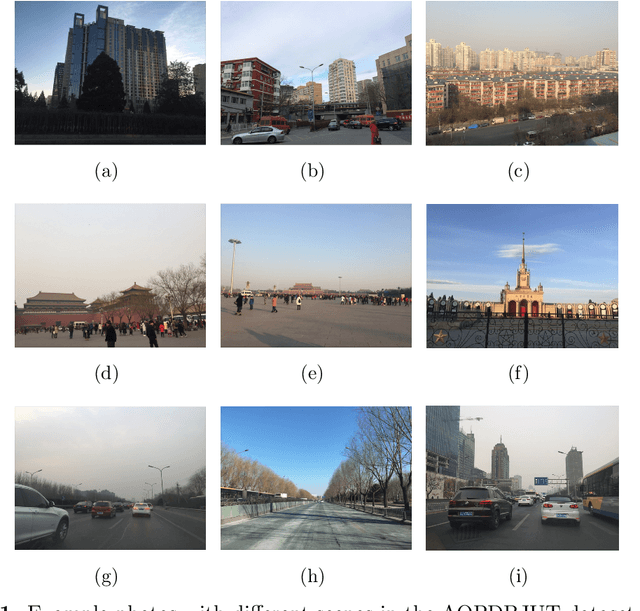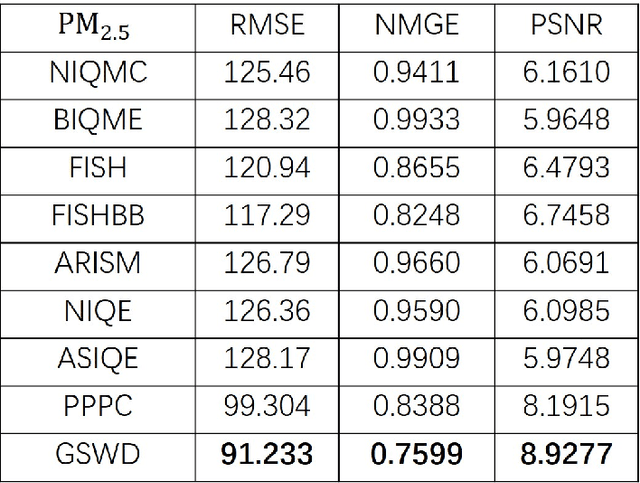AQPDCITY Dataset: Picture-Based PM Monitoring in the Urban Area of Big Cities
Paper and Code
Apr 06, 2020

Since Particulate Matters (PMs) are closely related to people's living and health, it has become one of the most important indicator of air quality monitoring around the world. But the existing sensor-based methods for PM monitoring have remarkable disadvantages, such as low-density monitoring stations and high-requirement monitoring conditions. It is highly desired to devise a method that can obtain the PM concentration at any location for the following air quality control in time. The prior works indicate that the PM concentration can be monitored by using ubiquitous photos. To further investigate such issue, we gathered 1,500 photos in big cities to establish a new AQPDCITY dataset. Experiments conducted to check nine state-of-the-art methods on this dataset show that the performance of those above methods perform poorly in the AQPDCITY dataset.
 Add to Chrome
Add to Chrome Add to Firefox
Add to Firefox Add to Edge
Add to Edge